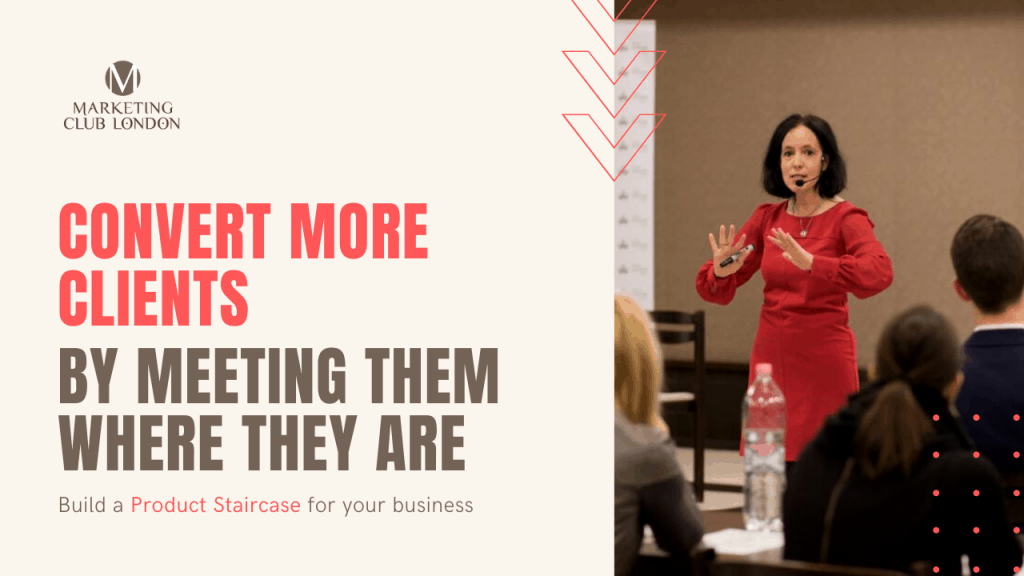Marketing Trends for 2022 (and how last year’s predictions have held up)
For the past 5 years, we have published a marketing trend report each January to see what is coming up. But not only that, we also look back on the past year’s predictions and see how those have held up. We rely on reports, analysis, and stats issued by market research and large marketing companies, and the experience we and our peers have had. Influencer marketing, AV, VR, email markeitng, video, audio content, events, and many other trends discussed below.

Reading time: as long as you read 2,267 words
Full disclosure: I’m not God, nor a magician, so I can’t see the future. But it’s a good idea to see how people behave and try to make some intelligent guesses.
Last year prediction: The rise of on-demand content
✅ Confirmed: Customers are used to being in control
During the pandemic, academic and business education institutions switched to online or blended learning, which resulted in a massive quantity of on-demand content. This, combined with the rise of streaming services, Youtube, and podcasts, led to people being used to being in control: use content when they want, and skip ads if they want.
The huge supply goes along with an increased overwhelm (have you ever stared at Netflix not knowing what to choose?).
It’s a good idea to guide users with recommendations on what to do next based on their previous behaviour and/or what is trending and viewed by others.
Gamification elements like quizzes and rewards when completing certain stages in education-led content – like Duolingo or LinkedIn Learning – help users keep focused, motivated, and follow a trail. Even better if we incentivize them to share their achievements.
On-demand content usage gives a very wide variety of data to providers about what, how, and when people view, opening the door to more personalised content with higher engagement.
Kantar predicts that ‘transparency in video on-demand viewership will transform media’s most dynamic market, as more actual video on-demand watching data at a program level are available.’
Video is an even bigger king than before
Video will continue to be the leading content marketing format. It was the most effective marketing format in HubSpot’s 2021 Not Another State of Marketing Report. That hasn’t changed this year, according to their poll, where it ranks first among the most effective content techniques, ahead of blogging and even email marketing.
As Tik Tok overtakes Google as the most visited site, and Instagram puts more focus on reel videos, short-form video format is going to stay an increasing trend this year (while long-form content continues to be trending). According to the HubSpot survey, ‘more than 31% of global marketers currently invest in short-form video content, 46% of them consider the strategy effective when it comes to performance and engagement. And, in 2022, 89% of global marketers plan to continue investing in it or increase their investment.’
Last year prediction: Storytelling will be increasingly used in social media
✅ Confirmed: LinkedIn gives priority to story-led content
We analysed 1,000 posts over the past six months, and when ranking them, the ones with the highest number of likes and comments include storytelling (Many of them not even business-related, like being free of drug or alcohol for a while or recovering from a lethal illness.)
We also tested it over 12 months by publishing a strongly story-led post each month (with business relevance), posting it in the least favourable time. Each time we noticed that LinkedIn distributes it massively: views increased rapidly even when the post was liked only by a few people, and we always got many 2nd and 3rd-grade connections commenting.
While there’s an increasing concern that ‘LinkedIn becomes Facebook’, with all the personal content, it’s a great opportunity to connect with the audience publishing story-led content with business relevance.
Case studies rock
One specific form of storytelling, case studies are still underused, while these are proven to generate leads and increase credibility. This is the story of the client who faces a problem, which is solved by the provider and results in a happy ending, a great outcome for the client. This is the number one demonstration tool over any description when selling solutions in both B2C and B2B marketing.
Case studies can take the form of a video, text, photos, pdf, ebook, and can be advertised in PPC, this way when a potential client is looking for a solution will find a story about somebody who was in their shoes and can see how their problem was solved.
According to the HubSpot poll, 64% of marketers who used case studies found them to be effective, and 15% claimed they provided the best return on investment of all the content types they used.
Last year prediction: Clubhouse is rocketing
❌ Failed: Clubhouse is dying
You probably remember the Clubhouse hype a year ago. The app was downloaded 9.2 million times in February, huge groups grew out of nothing, even Elon Musk appeared, and it seemed to be fun.
We had an 8-week experiment with Joyce Ong, called Clubhouse Marketing Mondays, which was really fun. But then the world opened up, and Clubhouse downloads fall by cc 90% (900.000 in June, which, considering the enormous investment in it was not fun to hear.)
The reason for the plunge could have been the fact that social media platforms like Facebook, Spotify, Twitter launched their own audio-based platforms, and Clubhouse was not very inclusive, neither transparent, very frequently changing the rules.
Audio-based content, however, keeps striving in 2022. Over the past decade, podcasts have become one of the most popular forms of (audio) entertainment in the UK. While podcast reach and consumption are as high as ever. According to a report by Statista, as of 2020, there were over 15 million podcast listeners in the United Kingdom (UK). The audience is growing steadily as the popularity of podcasts increases, with forecasts predicting close to 20 million listeners by 2024.
We launched our podcast called ConvertX radio in September 2021, and have great plans for 2022, including an interview series on what business leaders read.
Last year prediction: influencers are becoming an important part of the marketing mix
✅ Confirmed: 34% of global marketing professionals put influencer marketing at the top of their list
Influencer marketing is more settled now than a few years ago, and both influencers and marketers understand its principles. It’s a very easy-to-measure tool with a great ROI. Brands can save time on building and nurturing a committed audience and this is why they are ready to pay its price.
Influencers can grow very fast if they do it well, 16-year-old Ishaan Bhimjiyani grew a follower base of over 150,000 in 6 months on TikTok with his tips on exam revisions and could even build a business around that.
According to the HubSpot survey, 34% of global marketing professionals who answered said that they invest in influencer marketing in 2022, putting it at the top of the list – above other trends like mobile web design and short-form video marketing.
‘While 57% of marketing professionals that currently leverage influencer marketing say it’s effective, 46% of them plan to increase their investments in 2022. Additionally, 11% say it’s the top ROI-generating trend they’ve tested.’ – says the report.
Last year prediction: Email marketing will live forever
✅ Confirmed: Email marketing will live forever
Email marketing is 40x more effective in terms of return than social media. Paid ads have a much higher return combined with email marketing (when you advertise the lead magnet and give a signup option for a discount coupon in eCommerce.)
Even LinkedIn rolled out their ‘Newsletter’ feature, which is not technically a newsletter, only an article your audience is notified about. It’s still a good idea to use it, but remember to build your own audience and email marketing.
We have been sending our Marketing Love Letters almost every week in 2021 with a very minimal number of unsubscribers (1-2 per email), and over 60% opening rates. This is our second most profitable source of new business after networking.
Last year prediction: hybrid events will repace online only or offline only events
❓Mixed: Marketers invest less in online or hybrid events
It really depends on where you stand. Obviously, hybrid event platforms say it’s blooming, but frankly, after the initial buzz, I haven’t seen any memorable solutions for a hybrid event in practice.
What I experienced was a huge hunger for in-person events, people were happy to go back to these.
When it’s purely about education, it can work, but even my students at London Markeitng Club and Northumbria University reported that in-person learning is so much more effective.
The HubSpot survey seems to reinforce the above: in 2021, 51% of marketers planned to invest in virtual events. However, 17% of these marketers expect to cut back on their spending in 2022.
In spite of the ongoing uncertainty around in-person events due to the ever-changing Covid restrictions, the importance of perfectly niched events will increase. A niche could be the industry, like Hexagon (mainly lawyers), or LPNE (language professionals), area (like Westminster Business Council), or core values like Business Leaders’ Family, or London Marketing Club (sharing knowledge, helping first.)
With London Marketing Club we have a plan to bring together highly recognised people at unique venues to make memorable introductions.
Especially that ABM (account-based marketing) is becoming more of the focus of B2B companies, tailoring marketing materials on each prospect rather than mass-promoting them.
‘In 2022, 33% of marketers who haven’t used it before aim to do so for the first time.’ – says the HubSpot survey reports, which makes it a good idea for marketing agencies to offer as a service.
Last year prediction: 2021 might be the last full year of third-party cookies
❌ Failed: the death of cookies was postponed to mid-2023 at the earliest.
It seems like companies are too comfortable to act before it’s necessary. It is crucial, however, as ‘the search for high-quality data will be the fastest-growing challenge for marketers in 2022, resulting in a renewed sense of value and urgency.
Those who have bold data plans will be ahead of the game. To make the most of and experiment with their own ‘first-party’ data, brands will focus on direct customer relationships.’ – says the Kantar report.
This will require expertise beyond marketing, and successful companies have to hire or consult a Chief Data Officer or data expert.
Companies will also spend more on brand awareness and customer relationships apart from performance marketing.
Always on the menu: AR and VR
AR (augmented reality) and VR (virtual reality) are constant members of the past years’ trend reports. Some companies have implemented these successfully, with Zellebrate among them. The app, developed by Adamapp, displays relevant options based on the product a user wants and the best possible options available in the market to address that requirement without the biases of paid rankings.
I’m still waiting for the big breakthrough though: ‘in 2021, only 35% of marketers planned to use augmented reality or virtual reality in their campaigns. In 2022, 9 percent of marketers who didn’t use AR or VR before will do so for the first time in 2022.’ – according to the HubSpot survey.
Metaverse could be the key to that breakthrough. It is a digitized version of the physical world that revolves around the idea of being virtually presented in a digital representation. Metaverse has recently been adopted by the gaming industry and has brought revolutionary changes when it comes to marketing through the metaverse as the younger generation is more familiar and thus, comfortable with the concept they have experienced in virtual life.
Author: Timea Kadar, marketing strategist, research done by Faisal Hafiz.
References:
Kantar, n.d. About Kantar.
Raj, R., 2021. The Media Trends and Predictions 2022 by Kantar.
TheBrandBerries, 2021. Kantar’s Media Trends And Predictions 2022.
Yahoo Finance, 2022. Kantar’s five media trends & predictions that will shape 2022: content will be king.
Bump, P., 2021. The Marketing Trends of 2022 [The Ultimate Guide].
MarketScreener, 2021. HubSpot : The Marketing Trends of 2022.
Iskiev, M., 2021. The HubSpot Blog’s 2022 Marketing Industry Trends Report: Data from 1,000+ Global Marketer.
Mintel News, 2021. [PODCAST] SEASON FINALE: A FESTIVE LOOK BACK AND LOOK AHEAD. [
Mintel Blog, 2022. About Mintel. Available at: <https://www.mintel.com/about-mintel> [Accessed 10 January 2022].
Mintel Reports, 2021. Mintel Premium.
Mintel, 2022. 2022 Global Consumer Trends.
Statista Research Department, 3 May 2021











